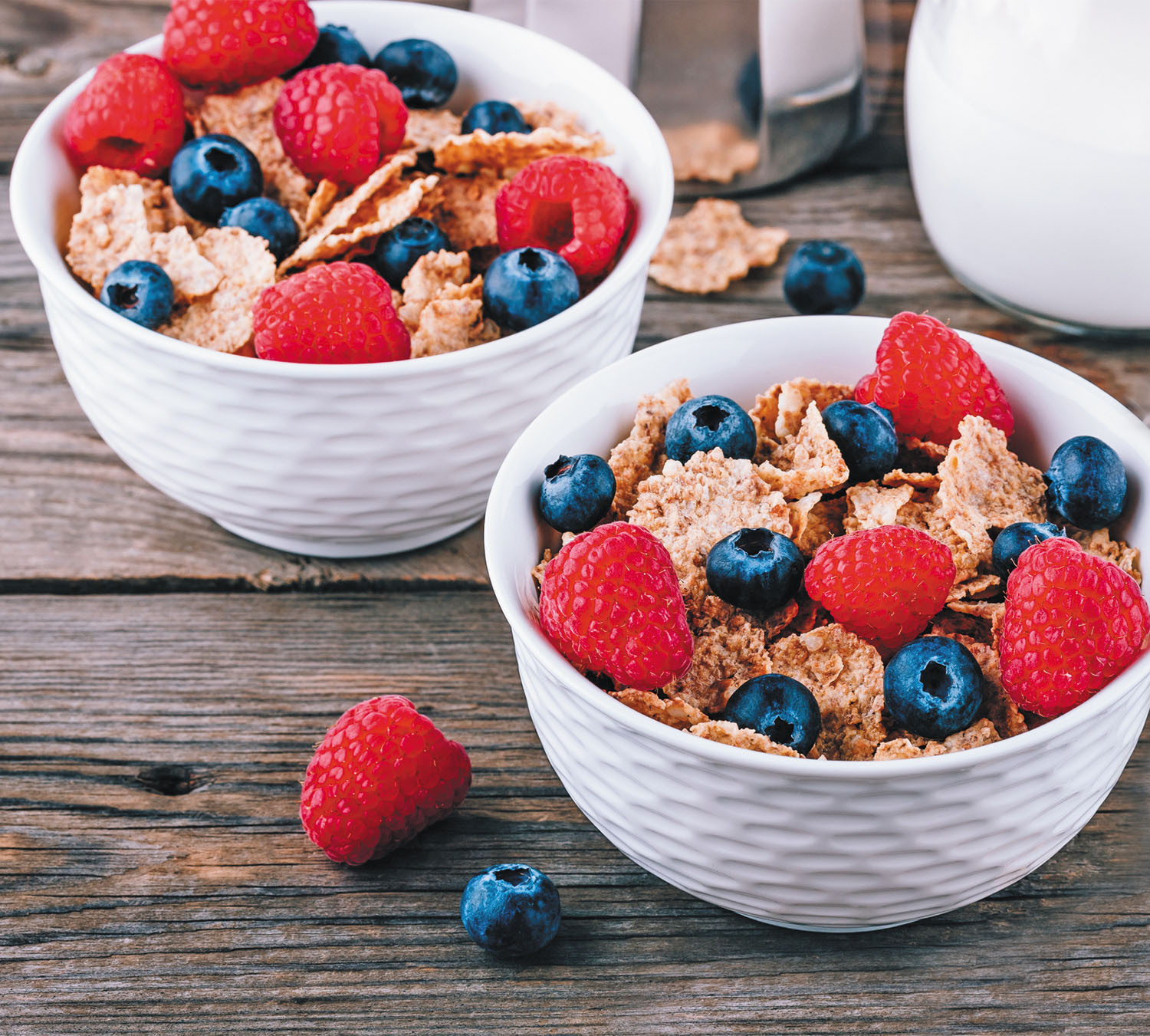
Respiratory health harms often follow flooding: Taking these steps can help

Tips to leverage neuroplasticity to maintain cognitive fitness as you age

Can white noise really help you sleep better?

Celiac disease: Exploring four myths

What is prostatitis and how is it treated?

What is Cushing syndrome?

Exercises to relieve joint pain

Think your child has ADHD? What your pediatrician can do

Foam roller: Could you benefit from this massage tool?

Stepping up activity if winter slowed you down
Staying Healthy Archive
Articles
Crank up your fiber intake to manage blood sugar and diabetes
News briefs
Struggling with high blood sugar or diabetes? A study published online March 6, 2020, by PLOS Medicine suggests that increasing your daily fiber intake may help. British researchers combed through dozens of studies with about 10,000 participants who had prediabetes, gestational diabetes, type 1 diabetes, or type 2 diabetes. Compared with people who ate low-fiber diets (19 grams of fiber per day), people who ate another 16 grams of fiber per day (a total of 35 grams per day) weighed less and had lower levels of blood sugar, cholesterol, and inflammation. There were also 14 fewer deaths per 1,000 people among those who ate high-fiber diets. If you'd like to increase your fiber intake, try to eat more fiber-rich foods at each meal. Good sources include whole-grain cereals, legumes, and nuts. For example, a cup of bran cereal has up to 47 grams of fiber, depending on the brand; half a cup of white beans has about 10 grams of fiber; and an ounce of almonds has about 13 grams of fiber. Increase fiber intake slowly, to give your digestive tract time to adjust, and remember to increase your water intake as well.
Image: © wmaster890/Getty Images
Step up your fitness and safety
This simple at-home exercise can improve flexibility, leg strength, and balance to protect against falls.
Falls continue to be a significant cause of fatal injury among older adults, according to the CDC. In fact, each year, falls result in more than 2.8 million injuries treated in emergency rooms and more than 27,000 deaths.
Lack of mobility and declining strength are the main contributors to falls. Still, another threat, which often goes unrecognized, is simply the fear of falling.
Don’t stop good habits when taking heart drugs
In the journals
Cholesterol-lowering statins and blood pressure drugs can improve heart health, but you still need to follow heart-healthy habits. That's the conclusion of a study published online Feb. 5, 2020, by the Journal of the American Heart Association, which found many people forgo healthy habits after they begin taking these medications.
Researchers in Finland identified 41,225 people who were free of cardiovascular disease. They collected such health data as body mass index, physical activity, alcohol intake, smoking status, and whether the people took statins or blood pressure drugs. Updated information was gathered from surveys every four years over a 14-year period.
Medication or therapy for depression? Or both?
No single treatment—whether it's an antidepressant drug or a style of talk therapy—can ease depression in every case. However, research suggests you will improve your chances of getting relief if you combine drugs and therapy. One report that pooled findings from 25 studies found that adding psychotherapy to drug treatment was more helpful than medication alone in treating major depression. Earlier research suggested that one reason therapy and medication may complement each other is that they have different effects on the brain.
In addition to relieving depression, combination therapy may help ward off recurrences. A classic three-year study reported in JAMA tracked recurrences of major depression in about 200 people ages 60 or older. Of those who received monthly interpersonal therapy and who also took an antidepressant medication, 80% avoided a recurrence. In contrast, the same could be said for only 57% of those who received the drug alone, 36% of those given just interpersonal therapy, and a mere 10% in the placebo group.
Does professional memory training work?
Are you worried about your memory? You can go it alone and teach your-self techniques for strengthening your memory. Or, you can get pro-fessional memory training. Some medical centers offer memory training programs in which people meet every week or so to learn memory enhancement techniques, then practice them as homework. Another alternative is to attend a series of individual sessions with a clinician who specializes in memory and other cognitive problems. Such a specialist can recommend specific strategies for the types of memory problems that affect you.
If you are considering a memory enhancement program, choose one that is run by a health professional with specialized training in cognitive rehabilitation. Some people benefit from individual treatment, where their particular needs can be identified and addressed.
If cannabis becomes a problem: How to manage withdrawal
There is disagreement over whether or not there is such a thing as a cannabis withdrawal syndrome, but it's definitely real, and with increased availability of legal marijuana and other products, even those who use it medicinally need to be aware of the symptoms, and what to do if they think they have it.
When dieting doesn't work
Most diets can help you lose weight, but that weight is frequently regained within a few months — a fact supported by an analysis of more than 100 research trials on diets. But losing weight is easier, and more likely to be permanent, if you choose a diet with foods you actually like.
Perfecting your walking technique
People are often surprised to learn that there's more to walking than simply putting one foot in front of the other. In fact, a little technique goes a long way to making your walks more enjoyable and more effective. Technique is especially important if you are hoping to become fitter and lose weight, because it will enable you to walk faster and longer. When you're standing tall, your muscles will move through a greater range of motion for a more powerful stride. Improving your walking posture will help you to look and feel more confident, too—and you'll look slimmer before losing a single pound. It will also help alleviate aches and pains and allow you to take deep breaths for more energy.
For any type of walking
The following rules will help you maintain good form.
The "hip hike" exercise for building hip strength
The hip hike is used to build hip strength if you're about to get into a running or walking program. It's easy, but you can also perform the hip hike by holding a chair to steady yourself. Make sure you're standing on a low, but stable, platform before you begin.
The "alphabet exercise" for foot and ankle strength
It's easy. Make believe your big toe is a pencil and sketch out the alphabet. These muscle movements will help build foot and ankle strength, which aids balance and helps prevents falls. You can learn more at the Harvard online course Exercises for Bone Strength.

Respiratory health harms often follow flooding: Taking these steps can help

Tips to leverage neuroplasticity to maintain cognitive fitness as you age

Can white noise really help you sleep better?

Celiac disease: Exploring four myths

What is prostatitis and how is it treated?

What is Cushing syndrome?

Exercises to relieve joint pain

Think your child has ADHD? What your pediatrician can do

Foam roller: Could you benefit from this massage tool?

Stepping up activity if winter slowed you down
Free Healthbeat Signup
Get the latest in health news delivered to your inbox!
Sign Up










